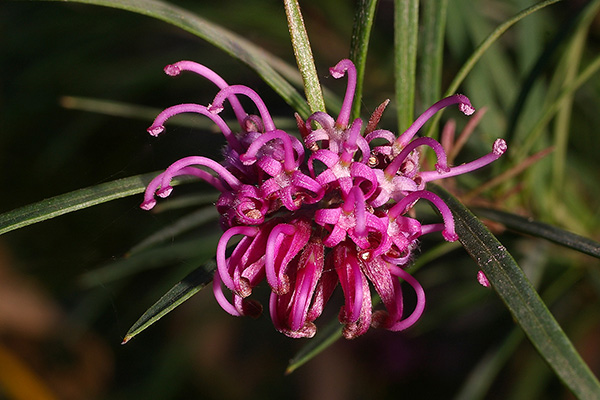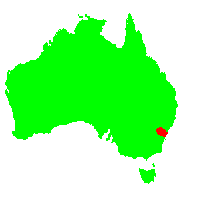General Description:
Grevillea sericea is a well known species and is widely cultivated. There are two sub-species recognised:
- subsp. sericea – leaves usually less than 30 mm long; pink or white flowers
- subsp. riparia – leaves up to 120mm long; deep pink to purple flowers. This variety occurs generally along rivers and streams in the lower Blue Mountains west of Sydney.
Grevillea sericea is usually a small to medium shrub from 1 to 2 metres high (subsp. riparia rarely exceeds 1 metre). The flowers occur in “spider” clusters on short branchlets from the main stems, are often prolific and occur over a long period from autumn through to spring.
Silky grevillea is popular in cultivation and succeeds in most temperate areas in soils of reasonable drainage. It prefers sunny or semi-shaded situations, responds well to pruning and is tolerant of at least moderate frosts. Some forms have a suckering habit which is never invasive. The species is an ideal size for average-sized gardens and, although it does not appear to attract honey-eating birds, native bees (as well as European honey bees) find the flowers very attractive. There is a popular hybrid form available known as “Colloroy Plateau” – this has G.sericea subsp.sericea and G.speciosa as its parents and has brilliant pink flower clusters.
The species can be grown from seed which should be “nicked” with a sharp knife prior to sowing to improve germination. Cuttings from firm, current season’s growth usually strike reliably.
* ROTAP = Rare or Threatened Australian Plants (Briggs and Leigh, 1988)
For further information refer the Australian Plants at Risk page

Grevillea sericea subsp. sericea
Photo: Brian Walters

Grevillea sericea subsp. riparia
Photo: Brian Walters
 Australian Native Plants Society (Australia)
Australian Native Plants Society (Australia)













